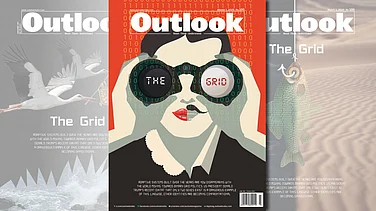The world is a dangerous place.
But what constitutes danger keeps changing over time. Thousands of years ago it was harsh weather and wild animals lurking in the bushes, now we worry about a nuclear attack from a rogue nation, an unknown flu or perhaps crossing a busy street. We deal with a wide range of threats hanging over our heads, encompassing our physical, biological, environmental...and of course our digital worlds.
The past few years we have seen how technology has caused a fundamental shift in how we live our lives, both as an individual and an organization. It has revolutionised the way we reach out and communicate with one another. Business or personal, we all need the internet to survive. Technology is so deeply imbedded in our world that any suggestion of disruption, can make us nervous. But the fact is that the internet is a fundamentally insecure space - open to cyber attacks. Constant connectivity and sharing of data make us more vulnerable. The closer we get, the danger is amplified.
We just got to know that over 17 million user records were stolen from Zomato, a popular food delivery app. It is probably one of the largest cases of online identity theft for an Indian company. Think about the number of apps we use - for taxis, making payments through e-wallets,banking transactions, shopping and so on. These are common transactions that we take for granted, but in the future will this prove to be the most dangerous and reckless thing to do?
No surprise that WannaCry captured our attention - it is cyber attack of an unprecedented scale that brought online safety back in focus. It is an extortion racket on the internet that has affected more than 150 countries across the globe, and over 200,000 computers, possibly more.
According to the FBI, Ransomware was a lucrative 1 billion dollar business in 2016 and the number is set to rise. WannaCry is one of the newest and largest ramsomware attacks, but it is certainly not the
first.
Cyber threats are not new. There have been all kinds of worms and viruses thriving in the online space. Way back in 1989, the first computer worm created by Robert Morris succeeded in shutting down most of the internet. It was followed by many others, targeting credit cards, government data centres and so on. But with time these have evolved, becoming more and more sophisticated and difficult to control.
There are a number of different techniques used by ingenious hackers - ransomware, IoT devices, cloud application threats and distributed denial of service (DDoS). All of these becoming more and more relevant and real as technology pervades our lives.
We are talking about autonomous cars, virtual assistants, delivery drones, medical implants, smart buildings, even smart cities! We are all going to be connected - with our refrigerators, our television sets, watches, speakers, washing machines, lights, fans, heating systems, ovens etc etc etc.
Research suggests there are already over 8 billion connected devices that exist. Imagine that number a few yearsfrom now. The sheer scale magnifies the threat to security and creates new opportunities for breaches. The big question remains unanswered -Are they going to be safe? We hope so, but it is unlikely. And this is a scary thought.
Our future is riddled with imminent online attacks - cyber warfare,cyber terrorism, cyber espionage. It is mostly a question of ‘when’and no longer ‘if’ it happens.
India is making a big push towards moving towards a digital economy, however there must be adequate investment in infrastructure and security measures. There is a pressing need to set legal and technical standards for protection given that close to 500 million people in India access the net everyday.
The danger will only increase as networks expand. Thieves don’t need keys anymore, and terrorists need no guns. Perhaps we can hack a network through the washing machine. Who knows what adversary we are going to face. Hackers are getting more imaginative, their weapons are getting more complex. It is a frightening reality. We are all at risk.
And thus Cyber security features on the top of the international agenda. Especially true given the increasing number of high profile breaches (including the US presidential elections) and the possibility of endangering the global economy. There is a huge cost when organisations lose customer data, credit card information or sometimes hard cash, like the recent 81 million dollar heist in Bangladesh.
Personal information, trade secrets, intellectual property, stock prices - there is a lot at stake. The global cyber security market is expected to hit 170 billion dollars by 2020, but that may not be enough.
How can we be more prepared for such attacks, control the damage and minimise losses. For starters, security needs to be given as much importance as innovation. The cyber defense measures might delay the launch of new age products to the market, but that is an investment for the future that we need to make.
There is a tremendous shortage of skilled personnel which needs to be addressed immediately. We need both funds and talent. Predicting and tackling attacks needs to be a
continuos process, not a reflexive one.
We need to get serious and incorporate these measures in our long term strategy to fight the war in the virtual space. Only time can tell us if we are adequately prepared for what is to come. Nobody want’s to ry. It is time we did something about it.
(The author is a Chartered Accountant and an MBA from IIM Calcutta, after working for a few years as a news anchor with Times Now.)
















